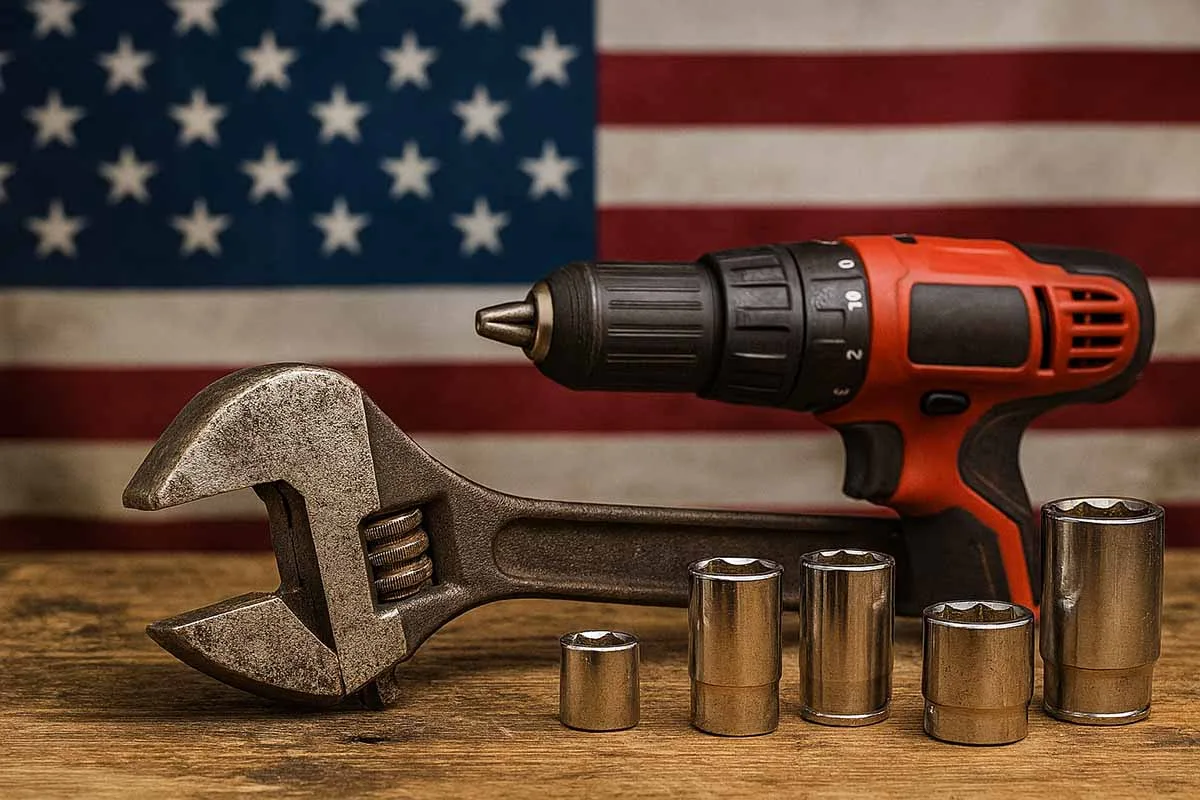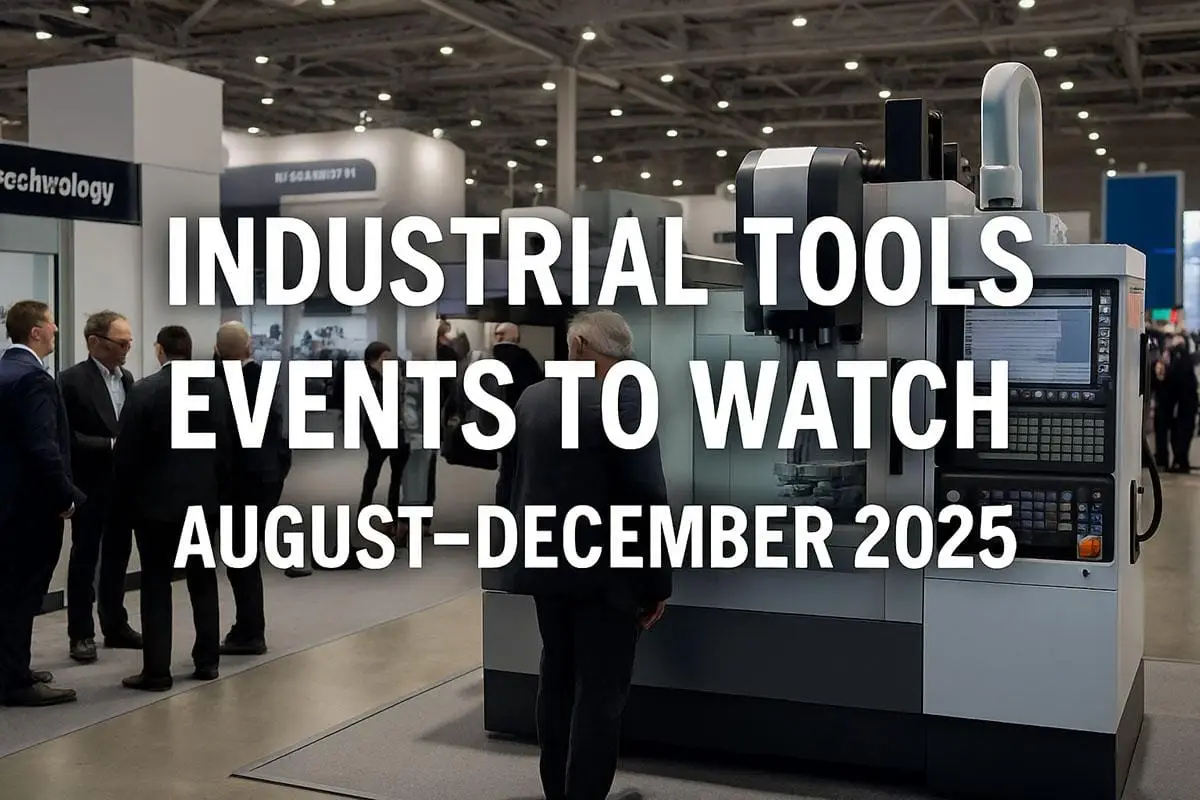Introduction
In 2025, the industrial tools sector across Europe is facing renewed pressure from U.S. trade tariffs introduced by President Donald Trump. These tariffs—part of a broader “America First” economic strategy—target steel, aluminum, and precision tools, directly affecting European manufacturers who rely on U.S. exports and global supply chains. As costs rise and margins tighten, the industry is recalibrating.
Background Context: Why This News Matters
The European industrial tools market is built on precision, reliability, and global reach. From torque wrenches to CNC accessories, many mid-sized manufacturers depend on U.S. buyers and transatlantic trade. The reintroduction of tariffs—some reaching 25–30%—threatens not only profitability but also long-term strategic planning.
These policies echo earlier trade tensions from 2018–2020, but with broader scope and deeper impact. Unlike previous rounds, the 2025 tariffs include finished tools, not just raw materials—putting direct pressure on European exporters.
Key Details and Facts
- Tariff scope: Steel and aluminum imports face up to 50% duties; finished tools (e.g. torque wrenches, drill bits, fastening systems) face 10–30%
- Affected countries: Germany, Italy, Czechia, Sweden, and Poland are among the hardest hit
- Export volume: Europe exported over €2.1 billion in industrial tools to the U.S. in 2024
- Price impact: Some manufacturers report 12–18% cost increases on U.S-bound products
- Supply chain strain: Raw material sourcing and logistics are being rerouted to avoid tariff zones
Expert and Industry Reactions
Wolfgang Niedermark, Executive Board Member, BDI (Federation of German Industries)
“An unprecedented attack on the international world trade system, free trade and global supply chains.” — European Parliament briefing
European Parliament Economic Briefing
“The 30% tariffs on EU goods, effective August 2025, could impact up to €93 billion in exports.” — Official EU analysis
OTB Group (Diesel, Jil Sander, Maison Margiela)
“We will have to increase our prices in the U.S. by 8–9% to offset the impact of tariffs.” — Reuters via USA Today
Impact on Users, Buyers, and Companies
- Manufacturers: Facing reduced margins, delayed investments, and potential layoffs
- Buyers: U.S. distributors may see price hikes or reduced availability of European tools
- SMEs: Smaller firms lack the flexibility to absorb or reroute around tariffs
- Innovation: R&D budgets are being trimmed to offset rising costs
- Strategic shifts: Some companies are exploring production relocation to non-EU countries
How Trump’s Trade Policies Are Impacting Europe’s Industrial Tool Market FAQ
Interesting Fact
In 2024, over 60% of torque wrenches used in U.S. aerospace manufacturing were sourced from European suppliers.
Lesser-Known Fact
Czechia’s industrial tool exports to the U.S. grew 18% in 2023—making it one of the fastest-growing EU contributors before the tariff hit.
Why were those tariffs introduced?
Dallas Federal Reserve – Economic Analysis (2025)
“Trade deficits are sometimes viewed as a problem and tariffs a tool to correct that problem. From a macroeconomic perspective, trade deficits are the mirror image of foreign capital inflows… Tariffs can influence trade flows, but their net impact on overall trade balances is theoretically unclear and empirically limited at moderate tariff levels.” — Full analysis available on Dallas Fed’s official site
Deutsche Bank Research – Tariffs and the U.S. Trade Deficit (2025)
“The Trump Administration has shocked the global trading system by resorting to trade policies not seen since the Great Depression… Tariffs were justified as a way to reduce the trade deficit and reshore manufacturing, but their economic cost is substantial.” — Read the full report from Deutsche Bank Research
In 2025, the United States recorded a significant trade imbalance, with imports surging to $401.1 billion in February alone, compared to $278.5 billion in exports—resulting in a monthly trade deficit of $122.7 billion. This widening gap reflects a long-standing structural feature of the U.S. economy: it is heavily consumption-driven, importing vast quantities of goods to meet domestic demand. The first half of 2025 saw a 14% surge in imports, fueled by strong consumer spending, post-pandemic supply chain normalization, and favorable currency conditions. In contrast, export growth was more modest, rising just 6% across the same period.
Several factors explain this imbalance. First, the U.S. dollar remains strong, making foreign goods cheaper for American buyers while making U.S. exports more expensive abroad. Second, the U.S. maintains low national savings relative to investment, meaning it relies on foreign capital inflows—an economic condition that naturally produces trade deficits. Third, many American companies outsource manufacturing to lower-cost countries, then re-import finished products, inflating import figures. While the U.S. continues to lead in service exports like finance and software, these gains are not enough to offset the massive volume of physical goods entering the country. The result is a persistent and growing trade deficit that reflects both economic strength and structural dependency on global supply chains.
Many economists argue that the U.S. trade deficit—now exceeding $900 billion annually—is not the result of unfair foreign practices, but rather a reflection of America’s own economic structure. The U.S. imports more than it exports because of strong domestic consumption, low national savings, and the dollar’s global dominance. These factors make foreign goods cheaper and U.S. exports less competitive. According to economists Enrique Martínez García and Kei-Mu Yi of the Dallas Federal Reserve, trade deficits are “the mirror image of foreign capital inflows” and are better explained by structural forces than by trade policy alone.
Despite this, the Trump administration has used tariffs as a political tool to address the imbalance—targeting European and Asian exporters with duties as high as 30%. Critics of this approach include James Broughel of the Mercatus Center, who warns that tariffs “do not remedy the deeper structural issues” behind the deficit, and James Surowiecki, who called the administration’s tariff math “extraordinary nonsense” after reverse-engineering its logic. These economists, among others, caution that while tariffs may shift trade flows temporarily, they rarely reduce the overall deficit and often strain international relationships. The result is a policy that externalizes domestic overconsumption—placing pressure on foreign manufacturers who are simply meeting demand.
Economic Outlook: What Comes Next?
As trade tensions escalate, economists and institutions have modeled both optimistic and pessimistic scenarios for the global economy. In the best-case outcome, the U.S. maintains elevated tariffs—averaging 15–20%—but avoids further escalation. The European Union responds with targeted countermeasures, and exemptions are carved out for critical sectors like aerospace, pharmaceuticals, and industrial machinery. According to Morgan Stanley’s 2025 trade analysis, this scenario would lead to moderate inflation, a temporary slowdown in trade, and no recession. Global supply chains would adapt over 6–12 months, and EU GDP growth would remain positive, though slightly reduced.
In contrast, the European Commission’s Spring 2025 Economic Forecast warns that full retaliation—by the EU, China, and other blocs—could trigger a global trade contraction. Tariffs would act as a tax on intermediate goods, raising production costs and eroding wage purchasing power. Investor confidence in the U.S. could weaken, risk premiums may rise, and financing conditions could tighten. The EU could face a GDP hit of up to 1.2%, while the U.S. risks entering a stagflationary phase—low growth paired with high inflation. While not a full-blown depression, this scenario represents a serious economic shock with long-term consequences for manufacturers, exporters, and consumers alike.
Conclusion
As trade tensions rise, Europe’s industrial tool sector finds itself at a crossroads. Manufacturers must adapt, buyers must stay informed, and platforms like Industrial Tools must continue spotlighting the stories behind the specs. If you’ve felt the impact—or have insights to share—join the conversation in the comments and help spread awareness across your networks.





